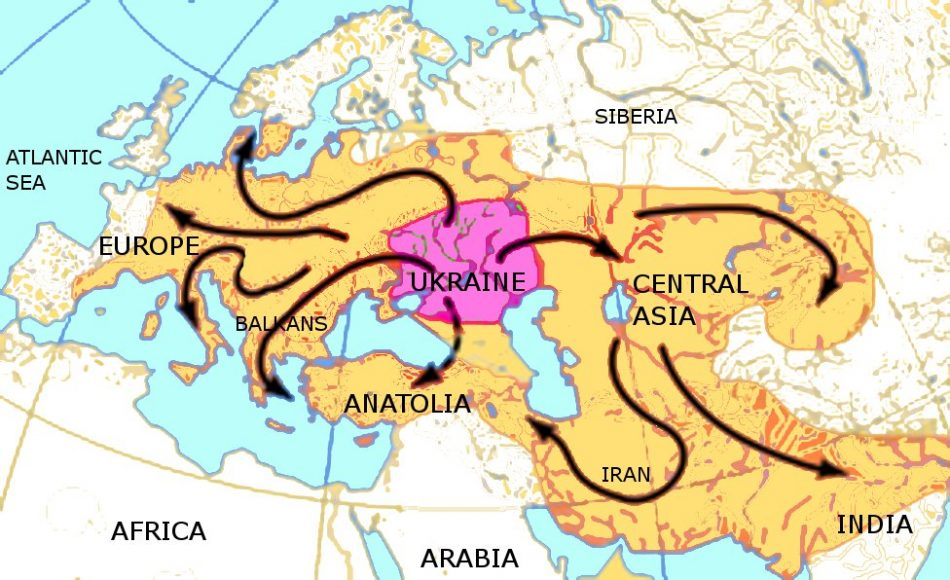The origin of Indo-European languages, which today comprise a family of over 400 languages spoken by more than 40% of the global population, has captivated scholars for centuries. Recent landmark studies shed light on the fascinating roots of this linguistic group, tracing it back to the Caucasus Lower Volga region approximately 6,500 years ago. These studies align genetic ancestry with the historical movements of the Yamnaya people, known to be among the earliest speakers of proto-Indo-European, the common ancestor of many modern languages. By analyzing ancient DNA from archaeological sites, researchers have uncovered complex interactions among diverse populations, enriching our understanding of how language families evolved. This pioneering work not only solves a longstanding mystery but also sets the stage for further explorations into the links between culture, genetics, and language dissemination in ancient communities.
The exploration of the beginnings of the Indo-European linguistic family reveals profound connections among ancient societies. Often referred to as the foundation of numerous language branches, these early tongues have a storied history that intertwines with the movements of peoples such as the Yamnaya, who inhabited parts of what is now Russia and Ukraine. Linguists and geneticists alike have collaborated to unravel the threads of these ancestral languages, emphasizing the importance of genetic ancestry studies in tracing the evolution of language families. By delving into the historical migration patterns and cultural exchanges that shaped these tongues, researchers broaden our awareness of linguistic development throughout Eurasia. The ongoing investigation not only captivates scholars of linguistics and anthropology but also enriches our understanding of humanity’s shared narrative.
The Foundations of Indo-European Language Families
The Indo-European language family represents a vast collection of languages spoken by billions worldwide, and its origins have fascinated scholars for centuries. Recent advancements in genetic ancestry studies have significantly contributed to our understanding of how language families evolved over time. The diversity within the Indo-European group, which encompasses languages such as Latin, Greek, and Sanskrit, underscores the intricate network of cultural and linguistic exchanges that took place across regions, particularly in Eurasia. By examining linguistic patterns alongside genetic data, researchers can paint a clearer picture of the ancient populations that spoke these languages and their migratory paths.
The theoretical frameworks established in the 19th century about the origins of Indo-European languages, particularly the steppe hypothesis, have been reinforced by modern genetic evidence. This hypothesis suggests that the speakers of proto-Indo-European languages originated from the vast steppes of Eurasia, particularly the regions we now recognize as parts of Russia and Ukraine. The recent findings regarding the Caucasus Lower Volga people provide complementary insights that bridge linguistic reconstruction with archaeological discoveries, establishing a more nuanced understanding of early human communication and social organization in this area.
The Role of the Yamnaya People in Language Dissemination
The Yamnaya people, who lived during the Eneolithic period, are pivotal to the narrative surrounding the emergence of Indo-European languages. Evidence suggests that these early pastoralists were not just language carriers but also cultural innovators. Their unique societal structures and lifestyles, facilitated by advancements such as horse domestication and the invention of wheeled vehicles, enabled them to travel vast distances. As they migrated across Europe and into parts of Asia, they spread their language and cultural practices, significantly influencing local populations.
In addition to their role as linguistic emissaries, the cultural practices of the Yamnaya—such as their burial traditions involving large kurgans—offer an interesting lens through which to study their societal values and beliefs. Genetic studies have illustrated that the Yamnaya’s travels and intermixing with other groups were vital in shaping the distinct gene pool of Europe, marking a transformative period that ultimately led to the establishment of many modern European languages. This evidence indicates that language and genetic heritage are deeply intertwined, reflecting the complex migrations and interactions of ancient populations.
Genetic Ancestry Studies and the Spread of Language
Frequently Asked Questions
What is the relationship between Indo-European languages origin and the Yamnaya people?
The origin of Indo-European languages has been linked to the Yamnaya people, who lived around 6,500 years ago in present-day Russia’s Caucasus Lower Volga region. These pastoralists significantly influenced the spread of proto-Indo-European languages across Europe and into Asia, marking a pivotal moment in linguistic history.
How do genetic ancestry studies support the theories on Indo-European languages origin?
Genetic ancestry studies, particularly those exploring the DNA of ancient populations, provide crucial evidence that traces back to the Caucasus Lower Volga people as the source of the Indo-European languages. These studies show that the Yamnaya people mixed with local groups, facilitating the diffusion of their language across vast territories.
What are the key findings regarding the proto-Indo-European speakers’ geographic origin?
Recent research indicates that the proto-Indo-European speakers originated from the Caucasus Lower Volga region, based on genetic evidence collected from ancient individuals. This marks a significant advancement in understanding the geographic roots of the Indo-European language family.
How did the Yamnaya people contribute to the spread of Indo-European languages?
The Yamnaya people contributed to the spread of Indo-European languages by migrating from their homeland in the Caucasus Lower Volga region, reaching areas as far as Ireland and Mongolia. Their advanced pastoral lifestyle and use of wagons enabled them to expand their linguistic influence across Europe and Asia.
What is the significance of the steppe hypothesis in understanding Indo-European languages origin?
The steppe hypothesis proposes that the Indo-European languages originated from the Eurasian steppes, particularly linked to the Yamnaya culture. This theory has gained substantial support from archaeological and genetic studies, emphasizing the role of the Caucasus Lower Volga people in the development of these languages.
Why is the identification of the Caucasus Lower Volga people important for Indo-European languages research?
Identifying the Caucasus Lower Volga people is crucial as it provides a genetic and historical context for the origin of Indo-European languages. It consolidates linguistic evidence with genetic data, revealing how these early populations were pivotal in shaping the language families known today.
What role do cultural traditions play in the story of Indo-European languages origin?
Cultural traditions, such as burial practices of the Yamnaya people, play a significant role in the origin story of Indo-European languages. These customs, carried from their Caucasus Lower Volga forebears, help to illustrate the continuity and transmission of language alongside cultural identity.
How do DNA evidence and archaeology intersect in researching the Indo-European languages origin?
DNA evidence and archaeology intersect in the study of Indo-European languages origin by providing complementary insights. Archaeological finds, such as kurgans, alongside genetic analysis from ancient remains, help researchers understand the movements and interactions of the Yamnaya and other ancient populations that spoke proto-Indo-European.
| Key Findings | Details |
|---|---|
| Origin of Indo-European languages | Identified to be from the Caucasus Lower Volga people about 6,500 years ago. |
| Geographic spread | Spread from Russia to as far as Mongolia and Ireland, covering 6,000 kilometers. |
| Significance of the research | Provides genetic evidence linking different Indo-European languages and groups, filling in historical linguistic puzzles. |
| Cultural practices | Shared burial traditions in kurgans between the Caucasus Lower Volga people and Yamnaya. |
| Impact of genetics | Genetic data from ancient individuals trace the lineage of several populations, identifying the roots of various languages. |
| Current challenges in research | Ongoing conflict in Ukraine complicates collaboration among researchers in the area. |
Summary
The discovery of the Caucasus Lower Volga people marks a pivotal moment in understanding the Indo-European languages origin, tracing back to an ancient population living in present-day Russia around 6,500 years ago. This groundbreaking research not only provides new insights into the historical spread of these languages but also highlights the continuity of cultural practices that have persisted through millennia. As researchers unveil the genetic underpinnings of language, they illuminate the intricate tapestry of human history that binds speakers of Indo-European languages across vast geographies and generations.



